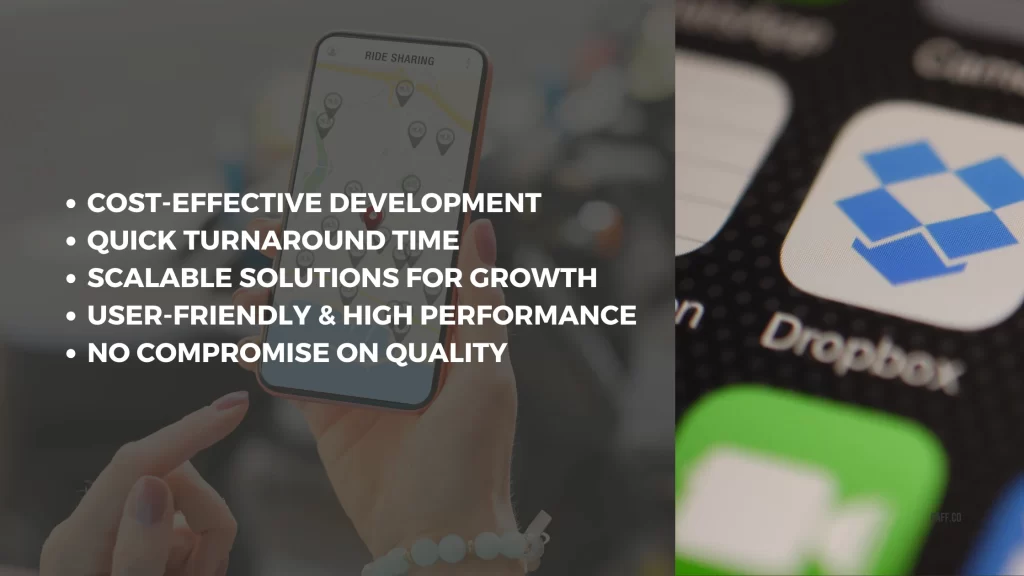How to Build a Custom Mobile App Development on a Budget
Custom mobile app development is essential for businesses, but it doesn’t have to be expensive. Start with an MVP, use cost-effective solutions like Flutter, Laravel, and React Native, and hire expert developers to optimize resources. BrancoSoft specializes in scalable, high-performance mobile solutions using cutting-edge technologies like Node.js, Angular, and Kotlin. With the right strategy, you can build a feature-rich app within budget.
Choosing the right development approach
Understanding different development approaches:
Choosing the right development approach is key to balancing cost, features, and user experience. BrancoSoft offers custom mobile app development solutions, including native, hybrid, and no-code/low-code options. Each approach has its benefits, so selecting the right one depends on your goals, budget, and technical needs. Our expert team ensures the best solution tailored to your business.
Native App Development: High Performance but High Price:
Native app development involves building separate apps for iOS (Swift) and Android (Kotlin, Java), ensuring top performance, security, and a seamless user experience. While it provides the best optimization, it requires more time, budget, and specialized skills. This approach is ideal for apps needing high-end graphics, real-time processing, and deep device integration. For budget-friendly alternatives, hybrid and cross-platform solutions offer a more practical option.
Hybrid App Development: Cost Effectiveness and the Platform Overall:
Hybrid app development enables a single codebase to work on both iOS and Android, using technologies like React Native and Flutter. This approach reduces development time and costs while offering near-native performance. Ideal for startups and businesses, hybrid apps provide a cost-effective way to reach a wider audience with a single application.
Low code development:
With drag-and-drop features, pre-built templates, and integrations, these platforms make app development accessible to beginners, saving time and cost. While perfect for simple apps or prototypes, no-code solutions have limitations in scalability and performance. As your app grows, you may need to transition to hybrid or native development for more advanced features.
Long-Term App Maintenance on a Budget
Building a custom mobile app is just the beginning—maintaining it efficiently is crucial for long-term success. To keep costs low, focus on regular updates, bug fixes, and performance optimizations while avoiding unnecessary feature additions. By planning a cost-effective maintenance strategy from the start, you can extend your app’s lifespan and keep users engaged without exceeding your budget.

Testing and Launching Without Overspending
To ensure a smooth launch without exceeding your budget, focus on testing essential functionalities, leveraging automation tools like Selenium, and using cost-effective cloud testing platforms such as BrowserStack. Engage real users through beta testing with TestFlight or Google Play to gather valuable feedback. A strategic approach helps you launch successfully while keeping costs under control.
Conclusion
Building a budget-friendly mobile app is possible with the right approach. By focusing on essential features, using affordable development methods, and applying MVP strategies, you can create a functional, market-ready app. Choosing the right monetization strategy will help generate sustainable revenue. Strategic planning, using open-source tools, and no-code platforms reduce costs while maintaining quality. Testing your app with a small audience allows for valuable feedback and improvements without unnecessary risks.










